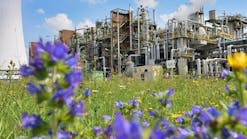Refinery inputs reached a record-high of 16.8 million b/d in each of the past 2 weeks, exceeding the previous record from summer 2005, according to the US Energy Information Administration.
Inputs at refineries in the Midwest and Gulf Coast have been particularly high, reflecting these refineries' access to lower-cost crude oil, expansions of refining capacity, and increases in both US demand and exports.
Refinery gross inputs in the Midwest have been higher than the 5-year range since late April, as shown by EIA's This Week in Petroleum. Typically Midwest drivers use more motor gasoline in the summer, and some of that has come from the Gulf Coast.
However, because of the recent and planned changes to pipeline infrastructure, both the type of products in the pipelines and direction of flow have been altered and less gasoline is expected to enter the Midwest from the Gulf Coast this summer. These changes increase the incentive for Midwest refiners to boost their own gasoline production.
The Midwest's record-high runs of 3.8 million b/d for the week ending July 11 pushed the region's refinery utilization to 100.3%, the first time any of the Petroleum Administration for Defense Districts (PADD) has exceeded 100% since EIA began publishing weekly PADD-level utilization in June 2010. But this number says as much about the metric used as the feat itself.
"Refinery utilization is calculated based on calendar-day atmospheric crude distillation unit (ACDU) capacity, which takes into account usual operating conditions, including both planned and unplanned outages. Under ideal conditions, when outages are low, refiners can produce at levels above their calendar-day ACDU capacity," EIA explained.
Gulf Coast gross inputs rose to 8.5 million b/d for the week ended June 27 and reached 8.7 million b/d for each of the following 2 weeks, reflecting realization of long-anticipated capacity expansions. The Gulf Coast's competitive advantage, which is based on upgrading capacity of refineries, relatively lower costs of inputs and fuel, and access to growing markets, keeps utilization rates high.
